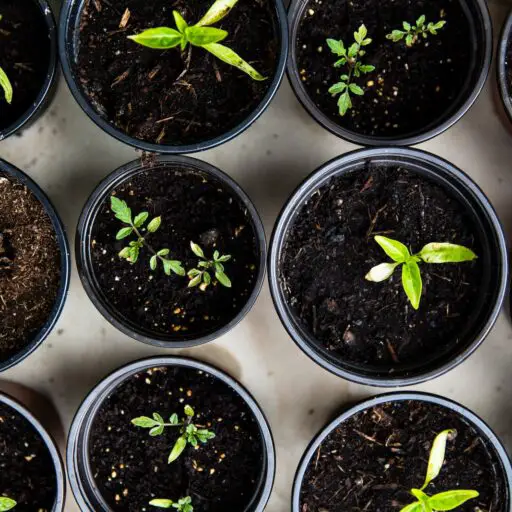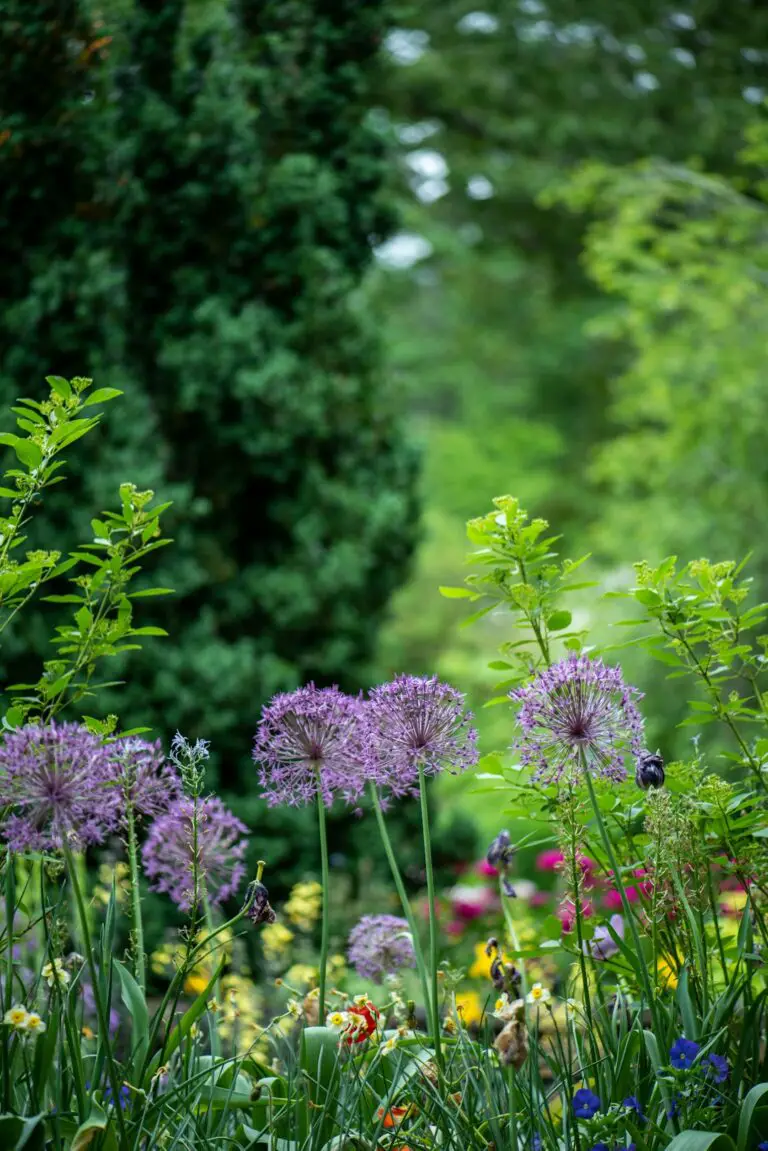Support our educational content for free when you purchase through links on our site. Learn more
Have you ever wondered how a simple patch of soil can transform a community? 🌍 Community gardens are sprouting up everywhere, and their benefits go far beyond just growing fresh vegetables. In this comprehensive study, we dive deep into the 10 remarkable benefits of community gardens that can enhance your health, strengthen social ties, and even boost local economies. Did you know that community gardeners consume fruits and vegetables 1.4 times more than their non-gardening neighbors? Imagine the impact this could have on your community’s health!
From improving mental well-being to fostering environmental sustainability, the advantages of community gardens are truly inspiring. Join us as we explore these benefits and share practical tips on how you can get involved or even start your own community garden. 🌼
Key Takeaways
- Enhanced Nutrition: Community gardeners eat more fruits and vegetables, promoting better health.
- Mental Health Boost: Gardening reduces stress and improves overall well-being.
- Social Connections: These gardens foster community spirit and collaboration among diverse groups.
- Environmental Impact: Community gardens contribute to urban greening and biodiversity.
- Economic Benefits: They can increase local property values and provide cost-effective food sources.
Ready to dig in? 👉 Shop gardening tools on: Amazon | Walmart | Home Depot.
Table of Contents
- Quick Tips and Facts
- The Rich History of Community Gardens: A Growing Legacy
- Top 10 Benefits of Community Gardens: Why You Should Get Involved
- Community Gardens and Mental Health: Cultivating Well-Being
- The Environmental Impact of Community Gardens: Greening Urban Spaces
- Nutritional Benefits: Fresh Food Right from Your Backyard
- Building Community: The Social Benefits of Gardening Together
- How to Start Your Own Community Garden: A Step-by-Step Guide
- Challenges and Solutions: Overcoming Obstacles in Community Gardening
- Success Stories: Inspiring Community Garden Projects
- Future Trends in Community Gardening: What’s Next?
- Conclusion
- Recommended Links
- FAQ
- Reference Links
Quick Tips and Facts
- Community gardens are estimated to number around 18,000 in the U.S. and Canada, according to the American Community Gardening Association (ACGA) 🌱.
- Engaging in community gardening can lead to higher fruit and vegetable intake—community gardeners consume fruits and vegetables 5.7 times per day compared to 3.9 times for non-gardeners 🍏.
- They foster social connections, improve mental health, and contribute to environmental sustainability 🌍.
- Community gardens can increase property values in surrounding neighborhoods, making them a win-win for communities 🏡.
The Rich History of Community Gardens: A Growing Legacy

Community gardens have roots that dig deep into history, sprouting from various cultural practices around the world. 🌎 The concept of shared gardening can be traced back to the victory gardens of World War I and II, where citizens grew their own food to support war efforts. Fast forward to today, and community gardens have evolved into vibrant spaces for urban dwellers to cultivate not just plants, but also relationships and community spirit.
Key Historical Milestones
- 1940s: Victory gardens became popular, encouraging self-sufficiency during wartime.
- 1970s: The community gardening movement gained traction in urban areas, particularly in the U.S. and Canada.
- 2000s: Community gardens began to be recognized for their role in food security and urban beautification.
These gardens are more than just patches of soil; they are living legacies of community resilience and collaboration.
Top 10 Benefits of Community Gardens: Why You Should Get Involved 🌼
-
Enhanced Nutrition: Community gardens provide fresh produce, which can significantly increase fruit and vegetable intake among participants. Studies show that community gardeners consume fruits and vegetables 1.4 times more than non-participants (NC State).
-
Mental Health Boost: Gardening has been linked to reduced stress and improved mood. A study found that community gardeners reported higher levels of subjective well-being compared to non-gardeners (PMC).
-
Environmental Impact: Community gardens contribute to urban greening, improve air quality, and promote biodiversity by attracting pollinators and beneficial insects 🐝.
-
Social Connections: These gardens foster a sense of community, allowing people to meet, collaborate, and build friendships. They serve as a hub for social interaction and support.
-
Educational Opportunities: Community gardens provide hands-on learning experiences about sustainable practices, nutrition, and environmental stewardship 🌱.
-
Economic Benefits: By growing their own food, community members can save money on groceries and increase local property values.
-
Food Security: They help address food deserts by providing access to fresh produce in underserved areas.
-
Physical Activity: Gardening is a great way to stay active, promoting physical health and well-being.
-
Cultural Exchange: Community gardens often reflect the diverse backgrounds of participants, allowing for cultural exchange through shared gardening practices and recipes.
-
Beautification of Urban Spaces: Transforming vacant lots into lush gardens enhances the aesthetic appeal of neighborhoods and can deter crime.
Community Gardens and Mental Health: Cultivating Well-Being 🌻
Engaging in community gardening can be a powerful antidote to stress and anxiety. Research indicates that gardening activities can lead to significant reductions in cortisol levels, the stress hormone. 🌿
Key Findings
- Increased Resilience: Community gardeners reported higher levels of resilience, which is closely linked to improved mental health outcomes. This is particularly important in urban settings where stressors are prevalent.
- Connection to Nature: Participants in community gardens often feel a stronger connection to nature, which has been shown to enhance overall well-being (PMC).
Personal Story
Take Sarah, for example. After moving to a bustling city, she felt isolated and overwhelmed. Joining a local community garden not only provided her with fresh vegetables but also a network of friends who shared her passion for gardening. 🌼 Now, she finds solace in the soil and joy in the community.
The Environmental Impact of Community Gardens: Greening Urban Spaces 🌳
Community gardens play a crucial role in enhancing urban environments. They contribute to biodiversity, improve air quality, and help mitigate the effects of climate change.
Environmental Benefits
- Carbon Sequestration: Plants absorb carbon dioxide, helping to reduce greenhouse gases.
- Pollinator Habitats: Community gardens provide essential habitats for bees and other pollinators, which are vital for food production.
- Stormwater Management: Gardens can absorb excess rainwater, reducing runoff and preventing flooding.
Visualizing the Impact
| Benefit | Description |
|---|---|
| Carbon Sequestration | Plants absorb CO2, reducing greenhouse gases. |
| Pollinator Habitats | Supports biodiversity and food production. |
| Stormwater Management | Absorbs rainwater, preventing flooding. |
Nutritional Benefits: Fresh Food Right from Your Backyard 🥕
One of the most tangible benefits of community gardens is the access to fresh, nutritious produce. This is especially significant in urban areas where food deserts are prevalent.
Key Nutritional Insights
- Increased Intake: Community gardeners consume fruits and vegetables 5.7 times per day, significantly more than non-gardeners (NC State).
- Cost-Effective: Growing your own food can reduce grocery bills and provide healthier options compared to processed foods.
Recommended Crops for Community Gardens
| Crop | Benefits |
|---|---|
| Tomatoes | High in vitamins C and K |
| Kale | Nutrient-dense and versatile |
| Strawberries | Delicious and rich in antioxidants |
Building Community: The Social Benefits of Gardening Together 🤝
Community gardens are not just about growing food; they are about growing relationships. They serve as a platform for social interaction and community building.
Social Benefits
- Fostering Collaboration: Gardens encourage teamwork and collaboration among participants, leading to stronger community ties.
- Cultural Exchange: They provide a space for diverse cultures to share gardening techniques and culinary traditions.
Personal Anecdote
When the local community garden in our neighborhood organized a harvest festival, it brought together families from various backgrounds. The event was filled with laughter, shared meals, and a sense of belonging that transcended cultural differences. 🌍
How to Start Your Own Community Garden: A Step-by-Step Guide 🌱
Starting a community garden can seem daunting, but with a little planning and teamwork, you can cultivate a thriving green space in your neighborhood!
Step-by-Step Process
- Identify a Leader or Leadership Team: Find passionate individuals to spearhead the project.
- Select and Prepare a Site: Look for available land, assess soil quality, and secure necessary permits.
- Organize Volunteers: Rally community members to help with planting and maintenance.
- Create a Sign-Up Process: Develop a system for community members to join and participate.
- Promote the Garden: Use social media, flyers, and community meetings to generate interest and support.
Helpful Resources
Challenges and Solutions: Overcoming Obstacles in Community Gardening 🚧
While community gardening is rewarding, it can also present challenges. Here are some common obstacles and how to tackle them:
Common Challenges
- Land Access: Securing land can be difficult. Consider partnering with local organizations or schools for space.
- Funding: Gardens often require financial support. Look for grants or community fundraising opportunities.
- Maintenance: Keeping the garden thriving requires ongoing commitment. Establish a schedule and assign responsibilities among members.
Solutions
- Community Meetings: Regular gatherings can help address concerns and keep everyone engaged.
- Education: Offer workshops on gardening techniques and sustainability practices to empower participants.
Success Stories: Inspiring Community Garden Projects 🌟
Across the globe, community gardens have transformed neighborhoods and lives. Here are a few inspiring examples:
- The Incredible Edible Project: This initiative in Todmorden, UK, encourages residents to grow food in public spaces, promoting community engagement and food security.
- The Green Thumb Project: In New York City, this program has revitalized vacant lots into flourishing gardens, improving local ecosystems and community pride.
These stories remind us that with a little effort, we can cultivate not just gardens, but also community spirit and resilience.
Future Trends in Community Gardening: What’s Next? 🚀
As we look ahead, the future of community gardening is bright! Here are some trends to watch:
- Urban Agriculture: The rise of urban farming initiatives is expanding the scope of community gardens, integrating technology and sustainability.
- Health and Wellness Programs: More gardens are partnering with health organizations to promote nutrition and mental well-being through gardening.
- Youth Engagement: Programs aimed at involving youth in gardening are gaining traction, fostering a new generation of environmentally-conscious citizens.
Conclusion

Community gardens are more than just patches of green; they are vibrant spaces that foster community, enhance mental health, and provide fresh produce. Whether you’re looking to improve your diet, connect with neighbors, or contribute to environmental sustainability, joining or starting a community garden can be a rewarding experience. 🌻
Recommended Links
FAQ

-
What is a community garden?
A community garden is a shared space where individuals come together to grow fruits, vegetables, and flowers, fostering community spirit and collaboration. -
How can I start a community garden?
Begin by gathering interested community members, securing a plot of land, and organizing volunteers to help with planting and maintenance.
Reference Links
Conclusion

Community gardens are a transformative force in urban environments, offering a plethora of benefits that extend beyond just growing food. They enhance nutrition, improve mental health, foster social connections, and contribute to environmental sustainability. Whether you’re looking to cultivate fresh produce, build community ties, or simply enjoy the therapeutic effects of gardening, there’s no denying the positive impact these green spaces have on individuals and neighborhoods alike. 🌱
In summary, community gardens provide:
- Positives: Access to fresh produce, improved mental well-being, enhanced community spirit, and environmental benefits.
- Negatives: Challenges such as securing land, ongoing maintenance, and potential funding issues.
However, the positives far outweigh the negatives, making community gardens a worthwhile investment for any community. If you’re considering getting involved, we wholeheartedly recommend joining or starting a community garden. You’ll not only reap the rewards of fresh food but also cultivate lasting friendships and a sense of belonging. 🌼
Recommended Links
- 👉 Shop Gardening Tools on: Amazon | Walmart | Home Depot
- Books on Community Gardening:
FAQ

What are the social benefits of participating in a community garden?
Community gardens create a sense of belonging and community spirit. They encourage collaboration among participants, leading to stronger relationships and networks. People from diverse backgrounds come together, share knowledge, and often engage in cultural exchanges through gardening practices. This fosters a sense of ownership and pride in the community, which can lead to further community engagement and activism.
Read more about “What Are the 7 Economic Benefits of Community Gardens? 🌱”
How do community gardens impact mental health and well-being in urban areas?
Community gardens have been shown to significantly improve mental health by reducing stress and anxiety levels. Engaging in gardening activities can lead to lower cortisol levels, promoting relaxation and a positive mood. Studies indicate that community gardeners report higher levels of subjective well-being and resilience compared to non-gardeners, making these gardens a valuable resource for mental health promotion in urban settings (PMC).
What role do community gardens play in promoting sustainable food systems and environmental stewardship?
Community gardens contribute to sustainable food systems by providing fresh, locally grown produce, which reduces the carbon footprint associated with transporting food. They also promote environmental stewardship by encouraging practices such as composting, organic gardening, and biodiversity. By transforming vacant lots into green spaces, community gardens enhance urban ecosystems and contribute to overall environmental health.
Can community gardens serve as a tool for building social cohesion and fostering community engagement in diverse neighborhoods?
Absolutely! Community gardens serve as a catalyst for social cohesion by bringing together individuals from various backgrounds to work towards a common goal. They provide a platform for community engagement, allowing residents to collaborate on projects, share resources, and participate in events. This collective effort fosters a sense of unity and belonging, making community gardens a vital part of diverse neighborhoods.


